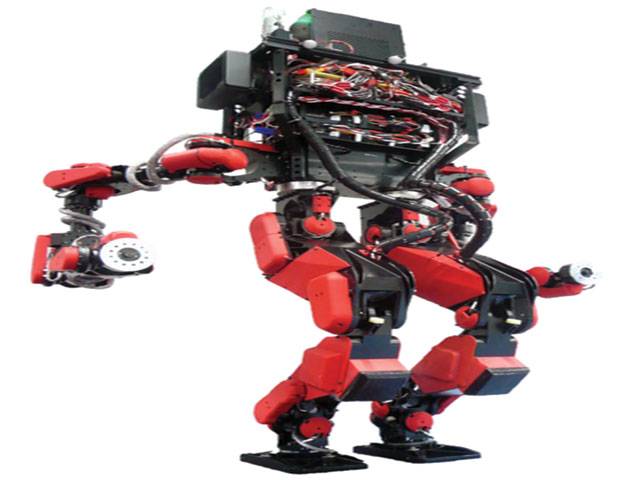BBC
Florida-A robot developed by a Japanese start-up recently acquired by Google is the winner of a two-day competition hosted by the Pentagon’s research unit Darpa.
Team Schaft’s machine carried out all eight rescue-themed tasks to outscore its rivals by a wide margin.
Three of the other 15 teams that took part failed to secure any points at the event near Miami, Florida.
Schaft and seven of the other top-scorers can now apply for more Darpa funds to compete in 2014’s finals.
Darpa said it had been inspired to organise the challenge after it became clear robots were only capable of playing a very limited role in efforts to contain 2011’s Fukushima nuclear reactor meltdown in Japan.
“What we realised was ... these robots couldn’t do anything other than observe,” said Gill Pratt, programme manager for the Darpa Robotics Challenge.
“What they needed was a robot to go into that reactor building and shut off the valves.”
In order to spur on development of more adept robots the agency challenged contestants to complete a series of tasks, with a time-limit of 30 minutes for each:
* Drive a utility vehicle along a course
* Climb an 8ft-high (2.4m) ladder
* Remove debris blocking a doorway
* Pull open a lever-handled door
* Cross a course that featured ramps, steps and unfastened blocks
* Cut a triangular shape in a wall using a cordless drill
* Close three air valves, each controlled by a different-sized wheel or lever
* Unreel a hose and then screw its nozzle into a wall connector
More than 100 teams originally applied to take part, and the number was whittled down to 17 by Darpa ahead of Friday and Saturday’s event.
Some entered their own machines, while others made use of Atlas - a robot manufactured by another Google-owned business, Boston Dynamics - controlling it with their own software.
One self-funded team from China - Intelligent Pioneer - dropped out at the last moment, bringing the number of contestants who took part at the Homestead-Miami Speedway racetrack to 16.
Schaft’s 1.48m (4ft 11in) tall, two-legged robot entered the contest the favourite and lived up to its reputation.
It makes use of a new high-voltage liquid-cooled motor technology that uses a capacitor, rather a battery, for power. Its engineers say this lets its arms move and pivot at higher speeds than would otherwise be possible, in effect giving it stronger “muscles”.
Thursday, November 21, 2024
Google robot wins Pentagon contest

9:58 AM | November 20, 2024
Bilawal Bhutto urges federal government to reconsider Indus canal projects
12:27 PM | November 21, 2024
Petition filed in LHC against Bilawal Bhutto and Ayaz Sadiq for election act violation
12:06 PM | November 21, 2024
Pakistan to convert 30% of vehicles to electric by 2030: Aleem Khan
November 21, 2024
Iqbal’s philosophy source of inspiration for humanity, says Saif
November 21, 2024
Punjab, Balochistan CMs discuss national issues in Lahore
12:02 PM | November 21, 2024
-
Hunger crisis to increase in South Sudan, warns UN
-
Hunger crisis to increase in South Sudan, warns UN
-
Pakistan’s judiciary champions climate justice at COP29 in Baku
-
Punjab struggles with persistent smog as Met Office forecast rainfall
-
Punjab residents face escalating smog crisis as pollution levels soar across country
-
Qatar says Hamas 'no longer welcome' in Gulf state
Land of Vigilantes
November 21, 2024
United in Genocide
November 21, 2024
Finally Fighting Back
November 21, 2024
Digital Stagnation
November 20, 2024
Xi’s Red Lines
November 20, 2024
Independent Supreme Court
November 21, 2024
Fat Loss Fantasy
November 21, 2024
Tackle Corruption Within School Boards
November 20, 2024
To Be Opportunistic
November 20, 2024
Democratic Backsliding
November 20, 2024
ePaper - Nawaiwaqt
Nawaiwaqt Group | Copyright © 2024





